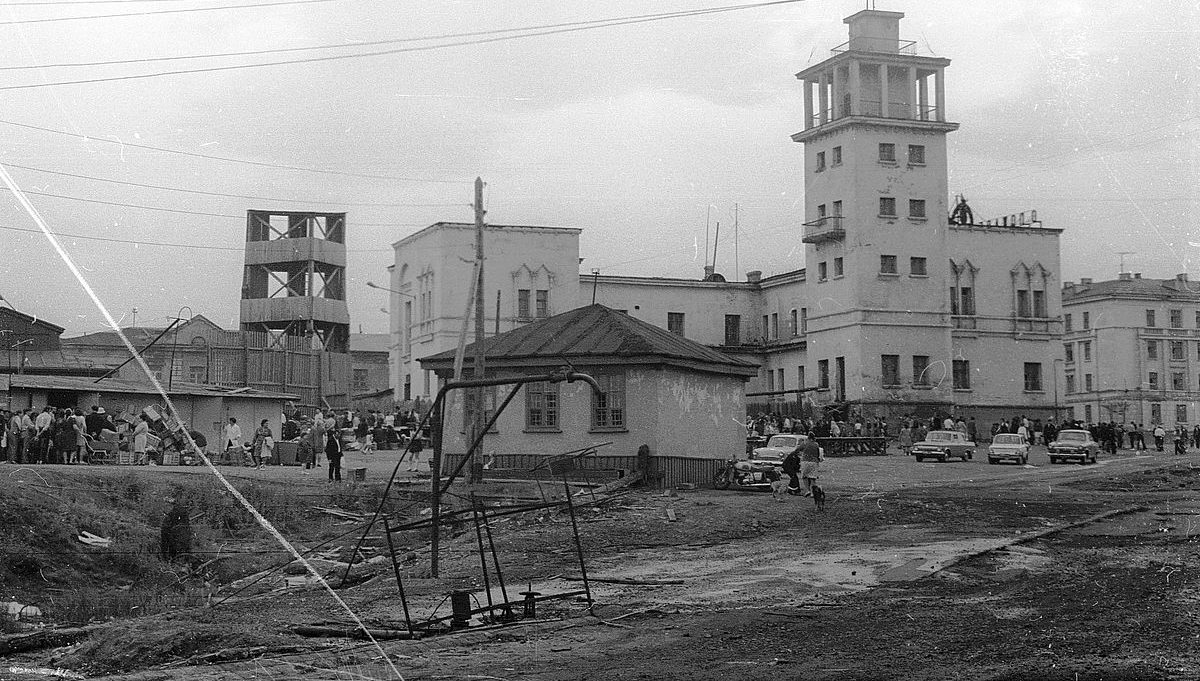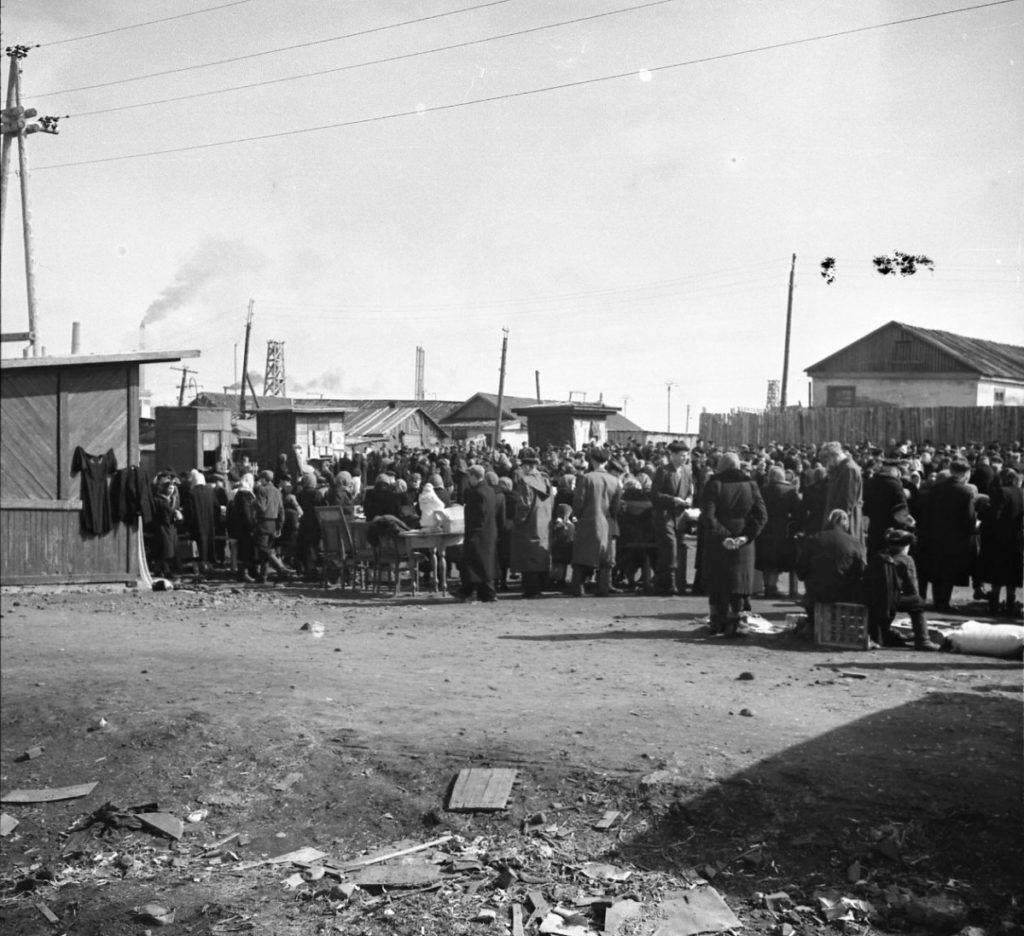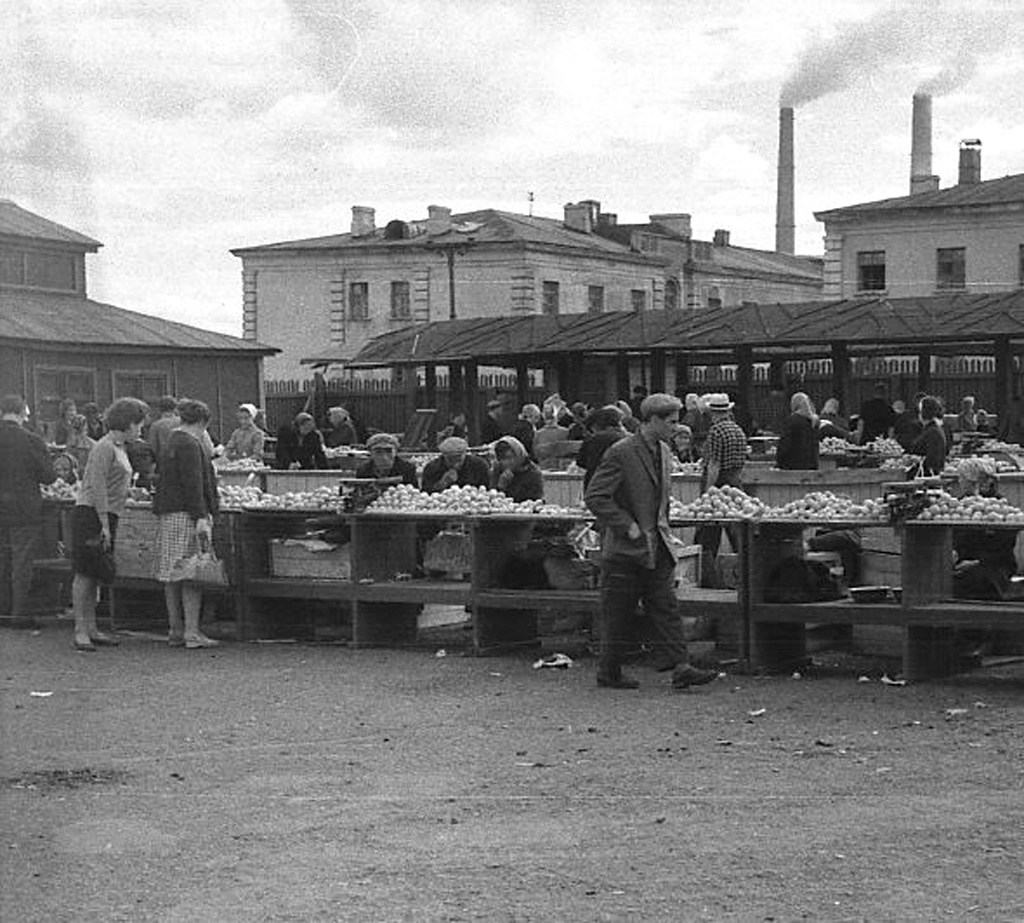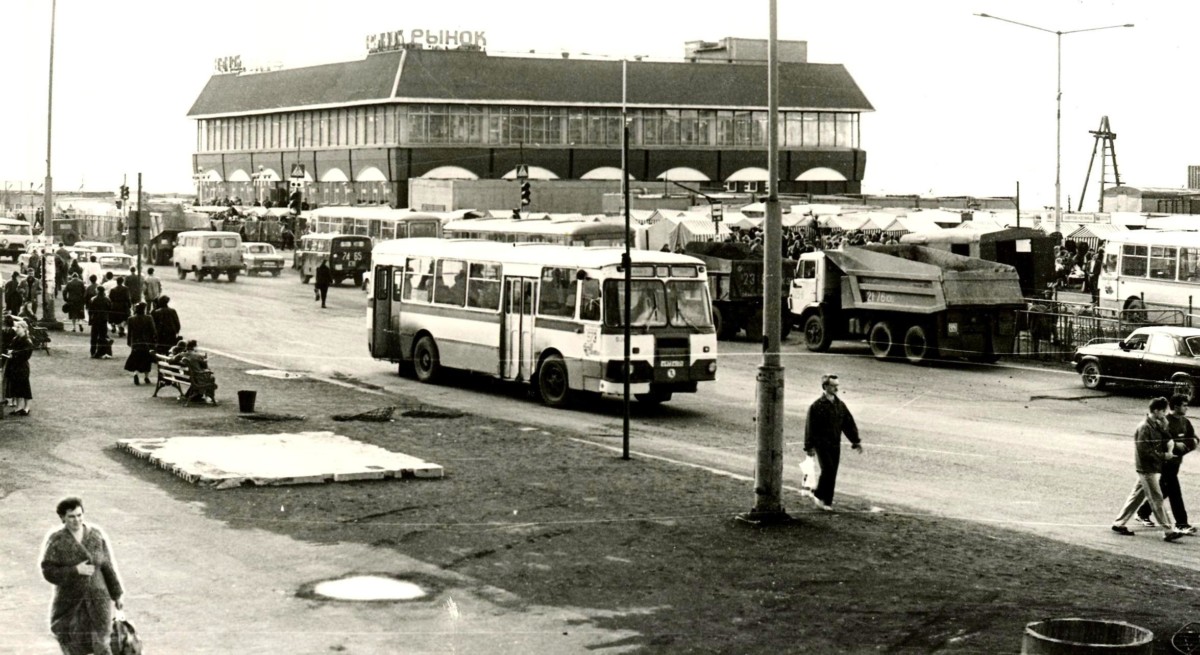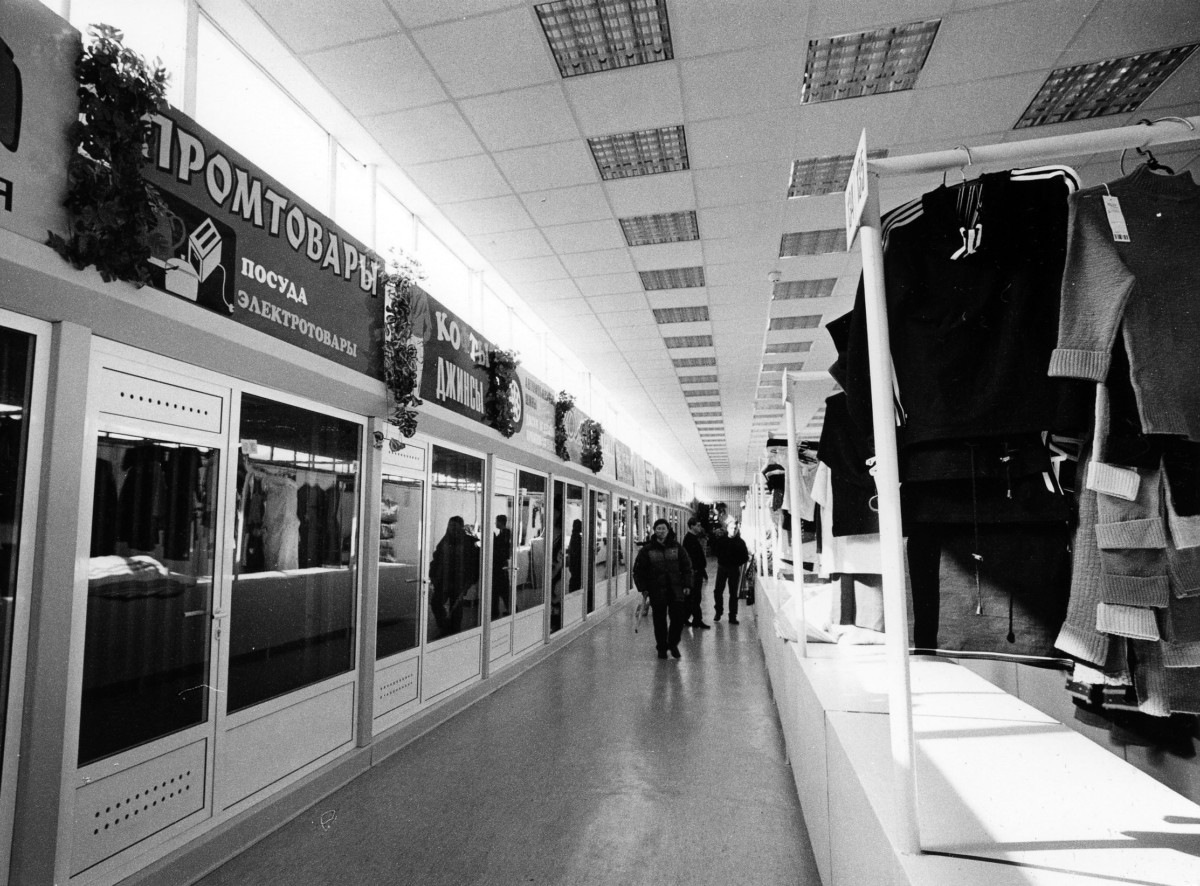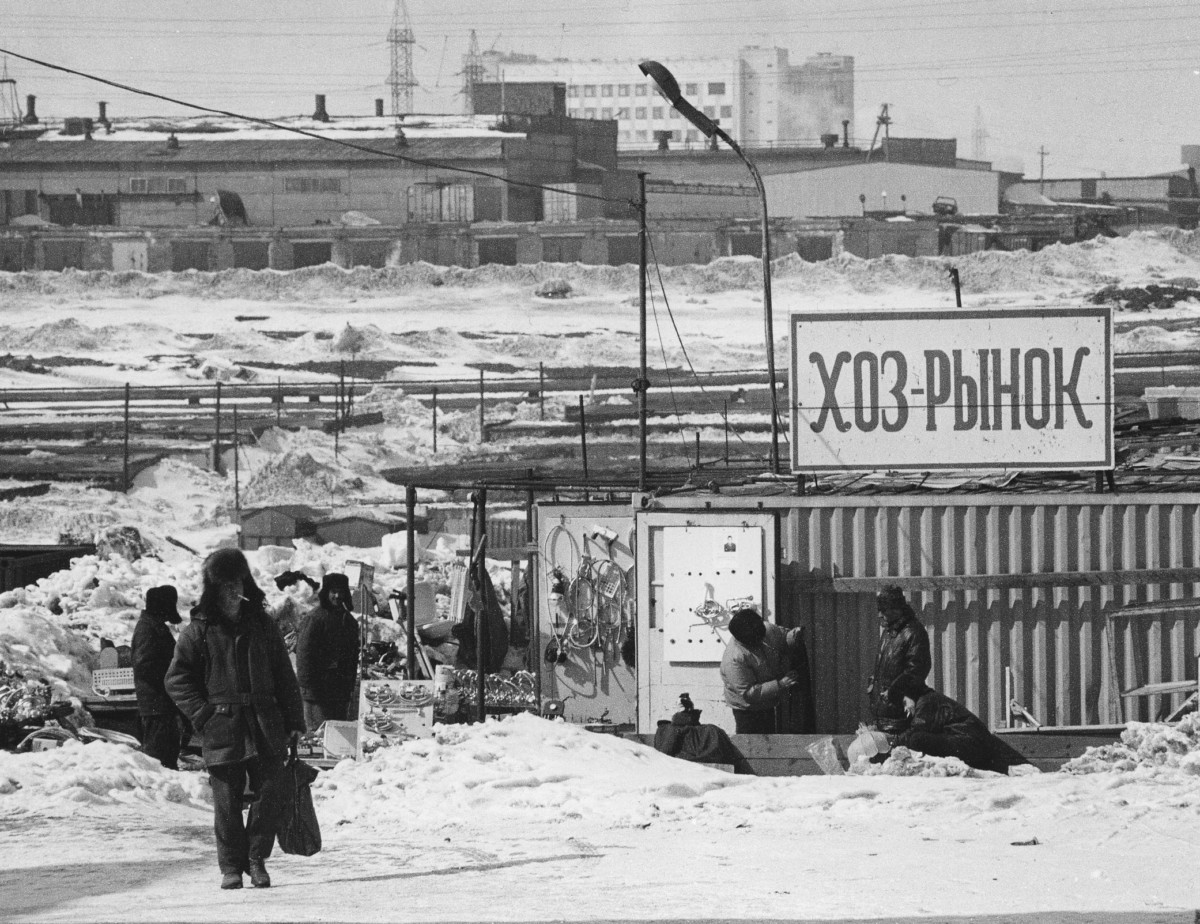#ARCTIC. #SIBERIA. THIS IS TAIMYR. The assortment of the flea market was huge: from blue colorant and satin panties to fresh vegetables and fruits. The grocery rows offered meat, fish, milk, sauerkraut.
The city newspaper more than once ‘wandered’ through the bazaar on its pages, criticizing the unsanitary conditions and ‘wormholes of the old way of life’, which took root in the flea market: fortune-tellers, amateur accordionists, traders with crosses and medallions. Despite the criticism, the Norilsk market remained.
In 1957, it moved from the Old City to the new one: the bazaar was located at the corner of Monchegorskaya and Pushkin streets, behind the firehouse: now there is the Joy of All Who Sorrow Church. There, at the same time, they sold manufactured goods – from fur hats to washcloths, and food products, including a terrible shortage – fresh meat, eggs, vegetables and greenery.
Later, speculators traded there in all sorts of shortages: cameras, perfumes, books and records. In the 1970s, the Norilsk people hunted for jeans and fashionable stocking boots.
However, now the townspeople, talking about the Norilsk bazaar, often remember sugar cockerels on a stick at 15 kopecks apiece and chewing resin – an old analogue of gum – at five kopecks each. In the late 1980s, the market moved to Nansen street, where a new market building was built near the bus station.
In the last issue of the History Spot photo project, we talked about the Norilsk music school: it was called the local conservatory, and the concert hall in acoustics was not worse than the best concert venues in the country.
Follow us on Telegram, Instagram , Facebook and Twitter.
Text: Svetlana Samohina, Photo: Nornickel Polar Division archive
